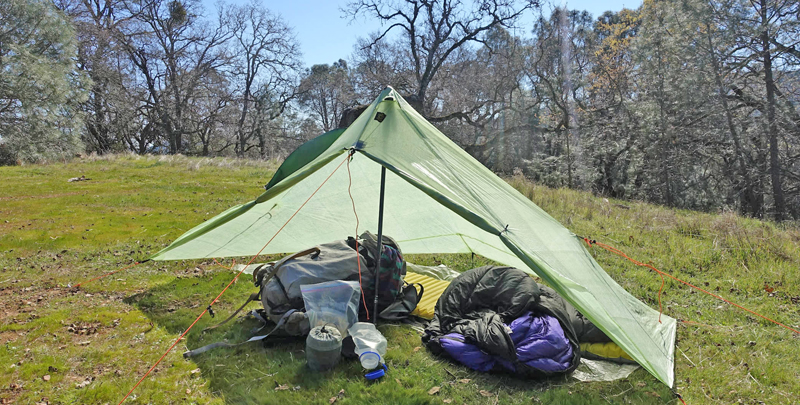
There are no “rules of thumb” or standards to determine what is needed for every individual to stay warm. Each of us is different and what sleep system will work varies by individual. Bottom line is trial and error is the path for determining what gear will work for each person. In addition, I have found that as I get older, I sleep colder. On my last trip I was somewhat cold. Not dangerously cold, but inconveniently cold – meaning I woke up several times each night due to the cold.
Temperatures at night were in the mid 30’s Fahrenheit, and my sleeping quilt was “rated” to 32F. I should have been warm, right? Wrong, the entire sleeping system has to be configured for the conditions. I did a couple things wrong, and it is always useful to analyze things when the outcome is less than desirable.
Your Sleeping Bag Isn’t the Only Important Thing
So how do sleeping bag and sleeping quilt manufacturers come up with temperature ratings? In the US, there isn’t an accepted universal standard to testing these pieces of equipment. Often marketing departments, using some sort of voodoo, come up with lower temperature limits and they have no connection to reality. In Europe there is a voluntary testing standard for rating sleeping bags for bags manufactured or sold in Europe, and that standard, (European Norm) EN 13537 is conducted by independent entities, allowing consumers to compare competing sleeping bags so the consumer can be an informed purchaser. It doesn’t mean a sleeping bag will match the requirements of each individual’s needs; that requires the experimental determination I mentioned in the opening paragraph. Good news in the US is that some companies, such as Recreational Equipment Inc. (REI) will only sell sleeping bags that have been certified using the EN 13537 testing protocol.
EN 13537 Ratings
There are three ratings:
- Comfort Rating
- Lower Limit
- Extreme Limit
The third rating, Extreme Limit, can be ignored. The “Comfort Rating” is the lowest temperature that will keep the average woman warm, and the “Extreme Limit” is the lowest temperature an average man will be warm. Note that most women sleep colder than men. Plus, not everyone’s comfort limit is the same, so these EN Ratings are really just for comparison when shopping for a sleeping bag.
EN 13537 Testing Protocol
The testing is fairly complicated. So I’ll summarize
- A “dummy” is placed in a sleeping bag with sensors attached
- The “dummy” is dressed in lightweight thermal underwear (top and bottom)
- The “dummy” wears knee length socks
- The sleeping bag hood is placed over the head and adjusted
- The sleeping bag is placed on an insulating pad with a rating of R-5
My First Mistake
Almost 10 years ago, Cascade Designs released a new kind of air mattress, the NeoAir . Unlike other air mattresses, the NeoAir had a fairly high R-value of R-2.5. It was a game changer for backpackers. Later Cascades Designs came out with the NeoAir XLite with a rating of R-3.2 and the NeoAir XTherm with a rating of R-5.7. I have one of each and take the one that matches the conditions I expect. Of course, the higher the R-value the more the mattress weighs. For winter camping one needs a minimum of R-5, and additional insulation can be achieved by combining other pads, such as foam pads.
For this cold sleeping trip, my intention was to bring the NeoAir XTherm, but I accidently brought the original R-2.5 mattress. How did this happen? Take a look at the pictures below:
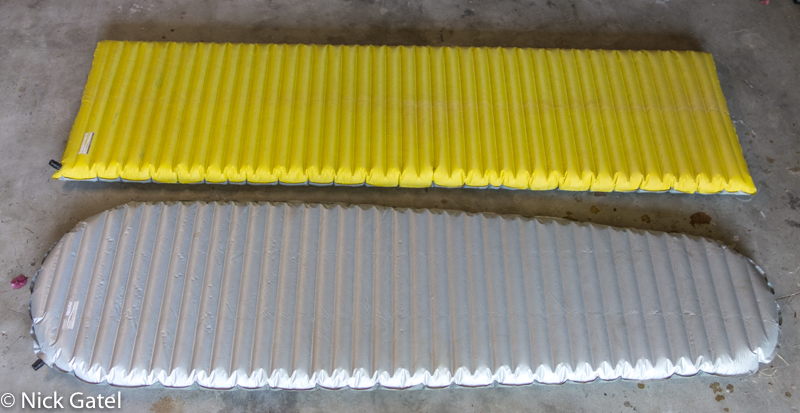
Should be pretty easy to pick the correct one, just by looking at the colors, right?
Now look at the mattress with the bottoms up (below):
They’re the same color. And I took the wrong one. This was the major problem in my cold sleeping situation – too low a R-value for the mattress allowing my body heat to escape to the ground.
My Second Mistake
I took a quilt instead of a sleeping bag without the proper accessories.
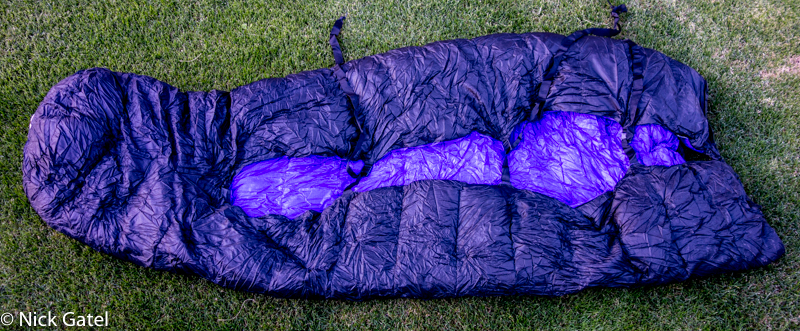
Quilts are much lighter than sleeping bags because they don’t have a hood and there is no insulation on the bottom (bottom insulation gets compressed when sleeping and isn’t very effective). For three-season backpacking a quilt is often a better (lighter) choice than a sleeping bag.
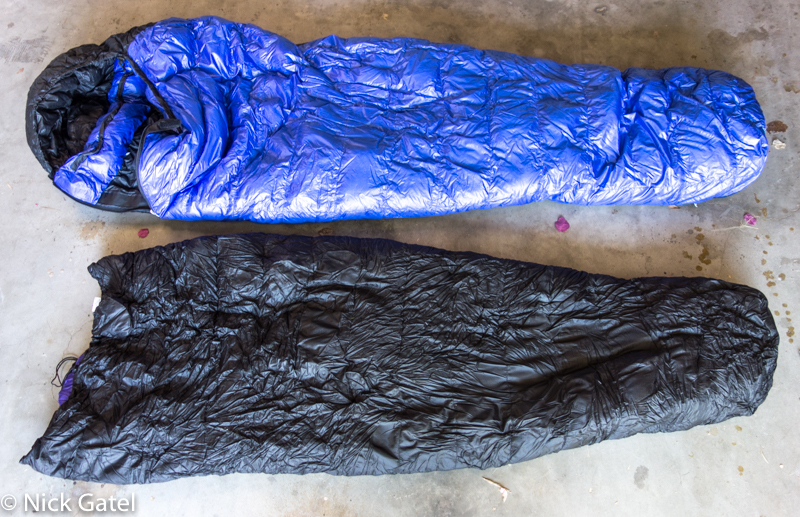
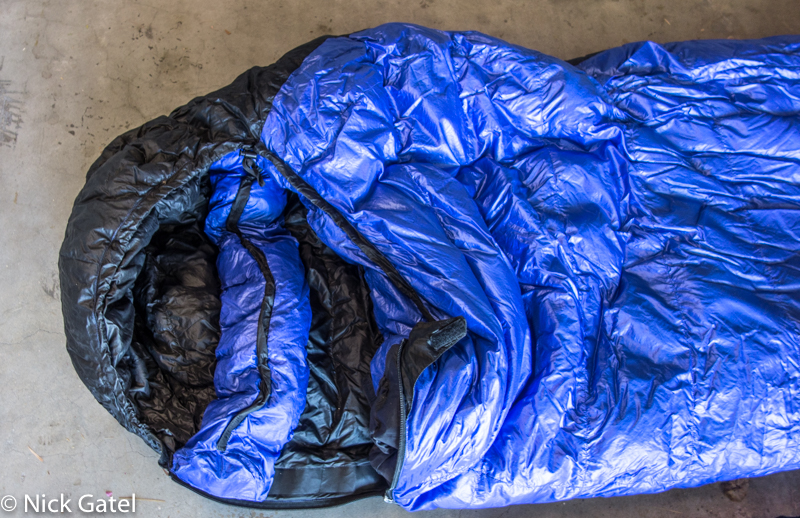
To my knowledge, there aren’t any hoodless quilts on the market that have been EN rated, so it is up to the user to compensate for this, meaning a warm enough beanie or hood must be used with the quilt. On this trip, I brought my favorite cap, a Mountain Hardwear Dome Perignon cap made from Polartec Windstopper fleece. With a proper sleeping pad, the cap should have been adequate, but a separate insulated hood would have ensured warm sleeping. I probably should have brought one of my insulated hoods or balaclavas instead of the Dome Perignon or in addition to it.
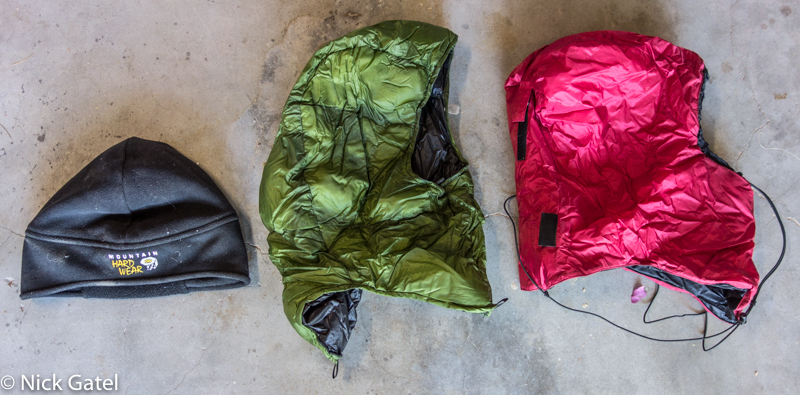
One other solution would have been to bring a heavier down filled hooded parka to wear in camp and to sleep in. But my only hooded parka weighs more than double my favorite down backpacking jacket, the Montbel EX UL Down Jacket. The parka would have been overkill for this trip.
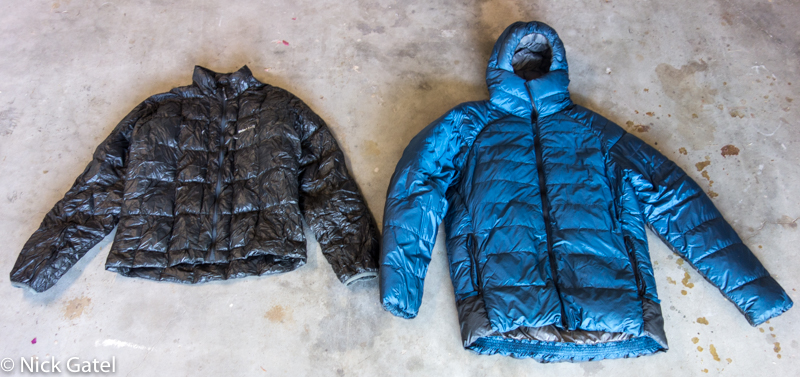
The purpose of this post isn’t to recommend specific products, but to share information that might help others to understand sleep systems so they can assemble the components that works for them.
Disclosure: PopupBackpacker pays the bills through marketing links, receiving small commissions from vendors, at no cost to the reader. This post contains said links.
